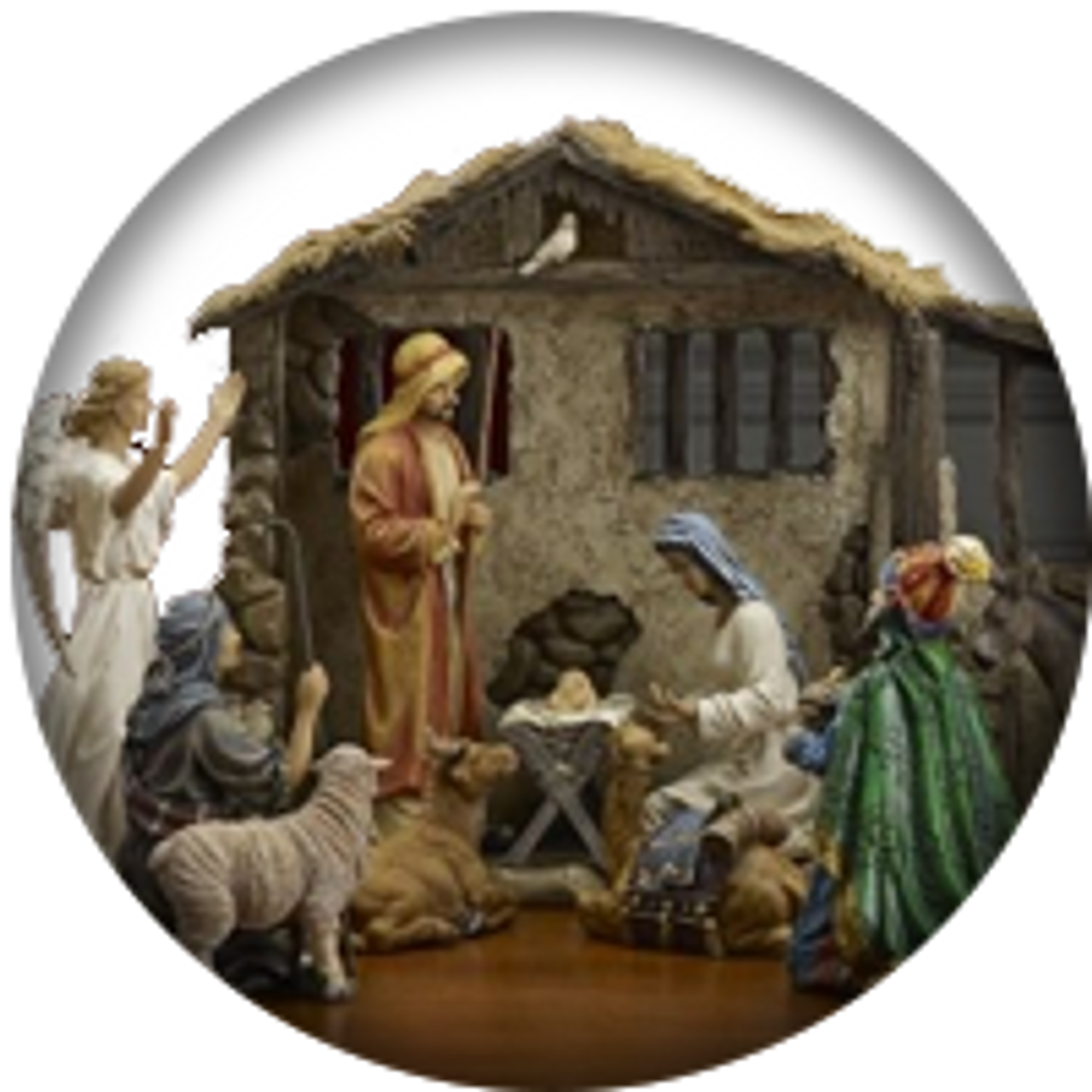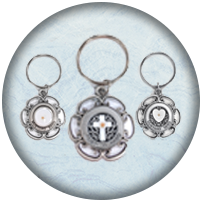THE FATIMA STORY AND THE ROSARY, PART I
Kathy Boh on 7th May 2019
THE FATIMA STORY AND THE ROSARY
This year, as we celebrate the month of May, we take another look at the appearances of Mary, the Mother of Jesus in Portugal, at Fatima.
THE FATIMA STORY
We start with a brief summary of the apparitions at Fatima.
For five months in 1917, from May 13th to October 13th. Our Lady appeared to three children in Portugal in the small town of Fatima—to 9 year old Lucia, and to Francisco, aged 8, and Jacinta, who was 6. She told them not to be afraid. She encouraged them to pray for peace, and told of trials and suffering and persecution. She then exhorted them to pray the rosary… to pray daily for world peace, and be devoted to God—the Father, the Son: Jesus, and the Holy Spirit.
“Secrets” were told to the three. The first two secrets revealed a vision of hell and its sufferings. Other secrets predicted the coming of the second World War. They also expressed a vital need for prayer for Russia’s conversion.
Finally, in the turnover to a new century, in the year 2000, the third and final secret was revealed to the public by the Vatican. It spoke of suffering in many nations, including: the martyrdom of those who were good; persecution; the destruction of nations; and dangers to the Holy Father.
INTERVIEWS
An Irish Dominican priest-sculptor was given the rare opportunity to spend time with Lucia—almost 30 years after the apparitions. Fr. Thomas McGlynn, O.P. asked Lucia (whom he calls “Lucy”) many questions throughout the process. He gently probed, thoroughly, both to get the story as accurate and complete as possible, and to create every detail and aspect of the statue as realistically as possible. The statue he created of Our Lady of Fatima now stands in Fatima.
Numerous clarifications were made regarding what occurred and what was said… during the apparitions and in the aftermath. Fr. McGlynn wrote a remarkably engaging book reporting his experiences. 1
A REALISTIC LOOK
Fr. McGlynn makes a very strong statement in regard to our approach to what Our Lady spoke and asked at Fatima.
“We have to look honestly at Fatima. It is not what we want it to be, but what God planned it to be. In the statue that I had brought to Portugal” [blog writer’s note: which he had previously created before meeting with Lucy] “there were pleasing preconceptions of what our Lady might have looked like. They were wrong. For the conclusion of this journey and its extraordinary developments I anticipated a day of unmixed happiness”… [blog writer’s note: Instead, his mother died, and was lying in a funeral home across the street from the church … where and when he was celebrating the dedication of the statue in New York City… on Mother’s Day, May 11,1947. His much anticipated pleasure of sharing that unique honor with his own mother was turned to grief, when she suddenly died.] “Many people interpret Fatima according to their own tastes and prejudices. They are wrong. ‘My thoughts are not your thoughts; nor your ways my ways, saith the Lord’ (Isa. 55:8).” 2
“God has proved the truth of Fatima with great miracles. We must accept that truth or run the risk of neglecting grace. If we find that our habits of thinking are at odds with what God has made known at Fatima, we had better promptly revise our thinking. Nobody likes to think about hell; divine justice is a frightening attribute that we easily ignore; penance is disturbing; devotion to the Immaculate Heart may seem like an unnecessary novelty; discussion of Russia may be imprudent… “ 3
A SPIRITUAL MEANING, WITH A WARNING
Fr. Mc Glynn focused on the message from Mary to the children.
“ ‘You have seen hell where the souls of sinners go,’ the Blessed Virgin said to Lucy. This is the first point of the Fatima message. We are free, we have abused our freedom, we are in danger of failing eternally, we must repent.” 4
“At the August apparition our Lady said: ‘Pray, pray very much…’ “5
Mary told the children to pray. In answer to a question about the rosary, Lucy told Fr. McGlynn directly:
“My impression is that Our Lady wanted to give ordinary people who might not know how to pray this simple method of getting closer to God.” 6
After Fr. McGlynn returned to the United States, Lucy (Lucia/ Irma Dores/ Sr. Mary of the Immaculate Heart) wrote to him and said,
“In your writing, please stress the spiritual meaning of things, in order to raise minds that today have become so materialistic to regions of the supernatural; so that they may understand the true meaning and purpose of the coming of our Lady to earth, which is to bring souls to heaven , to draw them to God.” 7
Lucy also told him that Mary did not say that the message was just for Catholics. As followers of Jesus Christ who are familiar with His word in the scriptures, we all understand that prayer is an unending thread (throughout the Old and New Testaments) that describes our communication with, and words to, our Almighty God. (We will say more about prayer in Part II.)
For now, let us examine the rosary… how it began, and what prayers it covers. 8
WHAT THE ROSARY IS
The rosary encompasses the fundamental prayers of many Catholics: the “Our Father”, which Jesus, Himself, taught us; the “Apostles Creed”, which declares the basic tenets of our faith in our Savior, Jesus, and in the Triune God; the “Glory Be”, which is simply praise and adoration of the Father, Son and Holy Spirit; and the “Hail Mary”, which is based in Scriptural words to and about Mary. The combined prayers feed our Scriptural call to intercede for others. Our Lady of Fatima had requested that the three children pray for some critical needs in the world around them. The call to pray and to intercede continues to go out to all of us.
The “Hail Mary” that was used for centuries was shorter—simply the biblical quotation (sometimes called the “Angelic Salutation”) that was spoken by the angel Gabriel to Mary…. “Hail, highly favored one, the Lord is with you… You shall conceive in your womb and bear a son…Jesus” [Luke 1:28,31.] Added later to the prayer were Elizabeth’s words to Mary when they both were carrying their sons, John and Jesus. “Most blessed are you among women, and blessed is the fruit of your womb…”[Luke 1:42.] The Angel Gabriel’s words and Elizabeth’s greeting became prayers that were also applied to prayer beads, and called the “Marian Psalter”.
Mary’s response to the Angel Gabriel is so expressive of her heart and her focus: “My soul magnifies the Lord, and my spirit rejoices in God my Savior… He has regarded the lowliness of His handmaid… For He who is mighty has done great things for me and holy is His name… “ [Lk. 1:46-49] (The full Magnificat from the gospel of Luke is printed in the footnotes below.) 9
The words that came from Mary's heart expressed great praise, honor, deference, focus and meekness toward her Lord and Savior… always letting the glory of her Savior remain in the forefront—even though that God-became-man was a helpless baby in her own womb. The fact that she was His mother on earth never overshadowed—in her mind or heart—the glory of the Lord God Almighty.
“…Mary’s focus was on rejoicing in God, in his exciting miracles and leadings… She was capable of being affected and shaped by the Holy Spirit, reachable, gateless, wall-less. She was open in terms of her own plan for her life or else she could have rejected God’s word. She was open to finding out God’s plan for her life step-by-step, never having the whole picture and not looking at what God might do next. She was free to be vulnerable to God…”
“…Mary was vulnerable and trusted God’s plan totally. She knew she did not fit into anyone’s plan but God’s, not even Joseph’s. She realized that God’s plan was scandalous in terms of her time; it put her in great jeopardy and had seemingly impossible complications. She resisted proving herself to Joseph and trusted God to protect her.” 10
We now address the phrase in the “Hail Mary”: “Pray for us sinners…” in regard to the issue that some non-Catholics have presented: that Christ is the only mediator. We affirm, with them, that there is only One Savior of mankind. He IS the only Way, Truth and Life. Jesus Christ alone—His death and resurrection—opens the gate to heaven and to new life, both here and for eternity. The shedding of His blood alone atones for our sins. 11
Additionally, The “Hail Mary” connects us to heaven (to “so great a cloud of witnesses” [Hebr. 12:1]) for purposes of intercession for others, for the salvation of souls. We do not pray to her, but with her. She is part of the “communion of saints” (mentioned in the creed)—the holy ones who have gone before us and are now present with the Lord in heaven.
We know this exhortation to pray for others applies to the saints in heaven who, as Revelation 5:8 reveals, intercede for us by offering our prayers to God: ‘The twenty-four elders fell down before the Lamb, each holding a harp, and with golden bowls full of incense, which are the prayers of the saints.’” [This refers also to non-canonized saints who are praying believers in Jesus Christ. The New Testament calls them “believers” and “saints”.]
So, the rosary as we now know it is a later form of the “rosary”. It is a development and combination of the two primary prayers: the “Our Father” and the “Hail Mary”. In later centuries, the focus became more on the Marian devotion than on the “Our Father”. (The power of the “Our Father”*—which was Jesus’ specific instruction on ‘how to pray’ [Mt.6:9]—is being re-discovered by many today.) The term for “rosary” has a meaning connected to the flower, "rose", and means: “a garland of roses”. The rose has been one of the symbols used to represent the Blessed Virgin.12
The “Glory Be” was added in praise to God—as we have mentioned— and the Apostles’ Creed became the broad-stroke, faith-affirming prayer.
WHY PRAY THE ROSARY?
The reasons to pray are as numerous as the endless reasons we relate to God in love and appreciation… in praise and in need. “As God’s people have learned throughout history, there are many forms of prayer. There are many ways of getting and being intimate with God, and relating to Him.” 13
Let’s look at some reasons why we would choose to pray the rosary.
“So many people wonder just what and how to pray in the middle of the hustle and bustle of modern life. It is so hard to do what the Lord asks, ‘Be still and know that I am God’. [Ps. 46:10]” 14
In the article we quote above (concerning the development of the rosary through history) we find an answer to this dilemma, and another reason that the rosary is one good way “to stay engaged in prayer during the day.” 15
“Christians” in earlier times were “helped by… monks with Paternoster (“Our Father”) beads… Some specifically have pursued means by which they could simplify some of their praying or synchronize it with others… or be able to participate in active parts of their day while praying. The rosary has become one such way.”16
This statement also brings up another purpose for saying the rosary: it is a prayer that can be prayed in unison with others.
This concept easily dovetails with Lucy’s statement to Fr. Thomas McGlynn in 1947 that we quoted above… that it is a “simple method of getting closer to God.” (Please see footnote # 6). That year she spent a great deal of time with him as he interviewed her. She also remained with him during sessions as he sculpted his Fatima statue—bit by bit with her direction.
Through Mary, God has given a prayer “tool” that is easy to use and that praises and honors Him (particularly the “Glory Be”). The rosary includes this prayer as continuous praise at the end of each decade.
“The ‘Glory Be’ (or ‘Doxology’, as traditionally it has been called throughout various Christian denominations) is a simple and direct hymn of praise to God the Father, God the Son, and God the Holy Spirit. (Referring back to the psalms’ connection to prayer beads, it is interesting to note that the last psalm—Psalm 150—is called a ‘Final Doxology’. The last line of that psalm reads: ‘Let everything that has breath praise the Lord. Hallelujah!’)” 17
The rosary also declares in detail Who He Is, asserting what we believe (‘Apostles’ Creed’). It reminds us how Jesus taught us to pray directly to the Father (‘Our Father’).
“The “Hail Mary” prayer is a constant reminder that saying “Yes” to God has broad and good and gracious consequences that can be multiplied toward the good of countless people… and have immense and everlasting results. Saying “Yes” to God can have fruitful, multiplied, heavenly, saving, blessed and endless outcomes—as she has exemplified in her life.
Another very real blessing that comes from saying the rosary is the meditation on the mysteries that accompanies our saying the repeated prayers.
“… [T]he soul of the Rosary is meditation on the mysteries of our Lord’s Incarnation, redemptive suffering, and glorious triumph. It is [Mary’s] favorite prayer because it draws us to our Lord.” 18
As we meditate on the 5 Joyful, the 5 Sorrowful, the 5 Glorious, and the 5 Luminous Mysteries of the rosary—primarily events in the life of Jesus—we are offering ourselves to God as we appreciate what He has done for us. It is most fruitful when we ask and allow the Holy Spirit to fill our minds and imaginations with His wisdom and graces that He would specifically give to us at each mystery. We may be much surprised at how He can lead us in so many ways to understand, appreciate, and be blessed by God’s saving graces towards us.
We continue with the theme of the rosary and Fatima with our next blog:
THE FATIMA STORY AND THE ROSARY, Part II:
WHY PAY ATTENTION NOW?
FOOTNOTES:
1 VISION OF FATIMA, Fr. Thomas McGlynn, O.P., 1948, 2017 (currently by) Sophia Institute Press, Manchester, N.H.
2 Ibid, p. 202
3 Ibid
4 Ibid, p. 203
5 Ibid, p. 204
6 Ibid, p. 90
7 Ibid, p. 201
8 This section (8 paragraphs or so) is taken from an article posted on this blog site at trinitychurchsupply.com/blog, that was called THE ROSARY: ORIGINS, HISTORY AND DEVELOPMENT, written and posted by Kathy Boh on October 20, 2016
9 The Magnificat of Mary [Luke 1:46-55]
My soul magnifies the
Lord
And my spirit rejoices in God my Savior;
Because He has regarded the lowliness of His handmaid;
For behold, henceforth all generations shall call me blessed;
Because He who is mighty has done great things for me,
and holy is His name;
And His mercy is from generation to generation
on those who fear Him.
He has shown might with His arm,
He has scattered the proud in the conceit of their heart.
He has put down the mighty from their thrones,
and has exalted the lowly.
He has filled the hungry with good things,
and the rich He has sent away empty.
He has given help to
Israel, his servant, mindful of His mercy
Even as he spoke to our fathers, to Abraham and to his posterity forever.
10 A TRANSFORMED MIND AND HEART, by Joseph L. Breault, 1978, Servant Books, Ann Arbor, MI, p.8.
11 THE ROSARY: ORIGINS, HISTORY AND DEVELOPMENT
12 Ibid
13 Ibid
14 Ibid
15 Ibid
16 Ibid
17 Ibid
18 VISION OF FATIMA, Fr. Thomas McGlynn, O.P.










